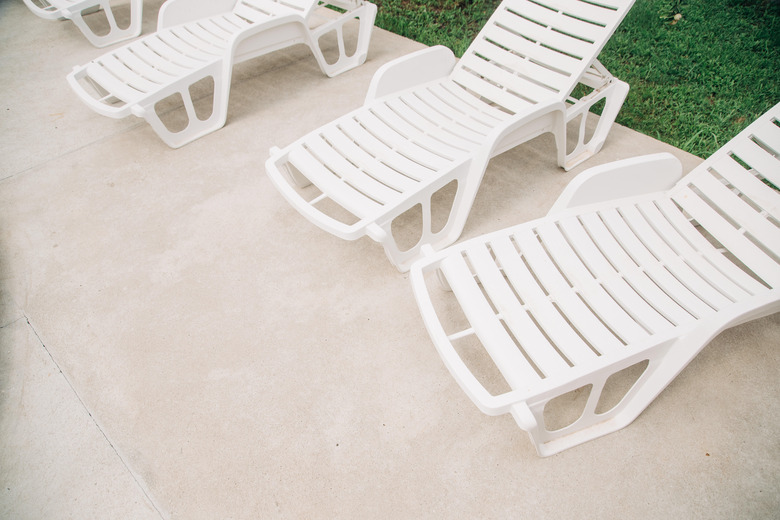How To Remove Yellow Stains From White Plastic
We may receive a commission on purchases made from links.
Your refrigerator might have a white vinyl handle, or you might have white vinyl flooring or lawn furniture. In fact, there are many uses for white plastic in a typical home, and while the plastic isn't always vinyl, it can suffer the same fate — yellowing from stains or age. The good news is that you can remove most stains without harsh chemicals; the bad news is that yellowing due to age or exposure to ultraviolet sunlight is often permanent. Even so, you have options.
Household Cleaners to Try
Household Cleaners to Try
Among the cleaners you can use to remove stains from flooring, refrigerator door handles, kitchen trim, and other items made from white vinyl are:
- Baking soda: Sprinkle a little baking soda on a sponge or abrasive pad; add a little water and scrub.
- Distilled white vinegar: Add vinegar to the baking soda or use it by itself. It will remove many food stains
— for example, mustard —
as well as those caused by hard water deposits. If you're removing a hard water stain, let it soak in vinegar for 15 minutes before scrubbing. It may help to make a paste of vinegar and borax to help the vinegar adhere long enough to dissolve the deposits.
- Chlorine bleach: Chlorine bleach works by altering the chromophores in the substrate, which are the molecules that give color. Whether it works on your plastic depends on the porosity of the plastic and the nature of the stain, but it's worth a try.
- Isopropyl alcohol: Rubbing alcohol is a mild solvent that won't harm plastic, and it may remove the stain, especially if the stain is a dye or a pigment.
- Acetone: Another solvent, acetone is a little stronger and shouldn't be used on acetates. It's safe for vinyl, PVC, and ABS plastics, though. It's the best choice for paint-related stains.
- Oxalic acid: An oxygenating bleach, oxalic acid can remove yellowing cased by tannins from leaves and tea. It comes as a powder that you mix with water; follow the instructions on the container.
- Hydrogen peroxide: This household disinfectant is also a bleach and will remove yellowing from plastic, but since you usually have to soak the plastic in it, it's best for small plastic items. Add 3/4 teaspoon of oxygen laundry bleach to a gallon of peroxide for a stronger cleaning solution.
Things Needed
Sanding the Yellow Away
Sanding the Yellow Away
When white plastic turns yellow, you may not be able to restore the color with a cleaner. The reason is that a chemical change occurs in the plastic as a result of exposure to ultraviolet light or an interaction with chemicals in the item. The yellowing may only affect the surface of the plastic, though, and if so, you may be able to remove that surface layer by sanding.
1. Clean the Plastic
Mix a few squirts of dish detergent and 1 gallon of hot water in a bucket. Dip a cleaning cloth into the solution and wash the plastic to remove any grime or grease that could clog the sandpaper. Rinse thoroughly to remove soap residue.
2. Sand the Plastic
Choose a fine-grit wet/dry sandpaper, such as 400 or 600 grit. You'll have to work harder with finer sandpaper, but you'll have less chance of it leaving noticeable scratches. Lubricate the sandpaper with water and work the paper over the plastic, moving in a circular or back-and-forth motion. Clean the paper in water whenever it gums up with gunk.
3. Wipe It Down
Wipe the plastic down with a moist cloth when you're finished sanding.
4. Wax and Buff
Restore the shine by wiping on paste wax with a cloth and buffing it up.
Tip
If you can't restore the original white color even by sanding, consider spraying the yellowed surface with paint designed for plastic.
